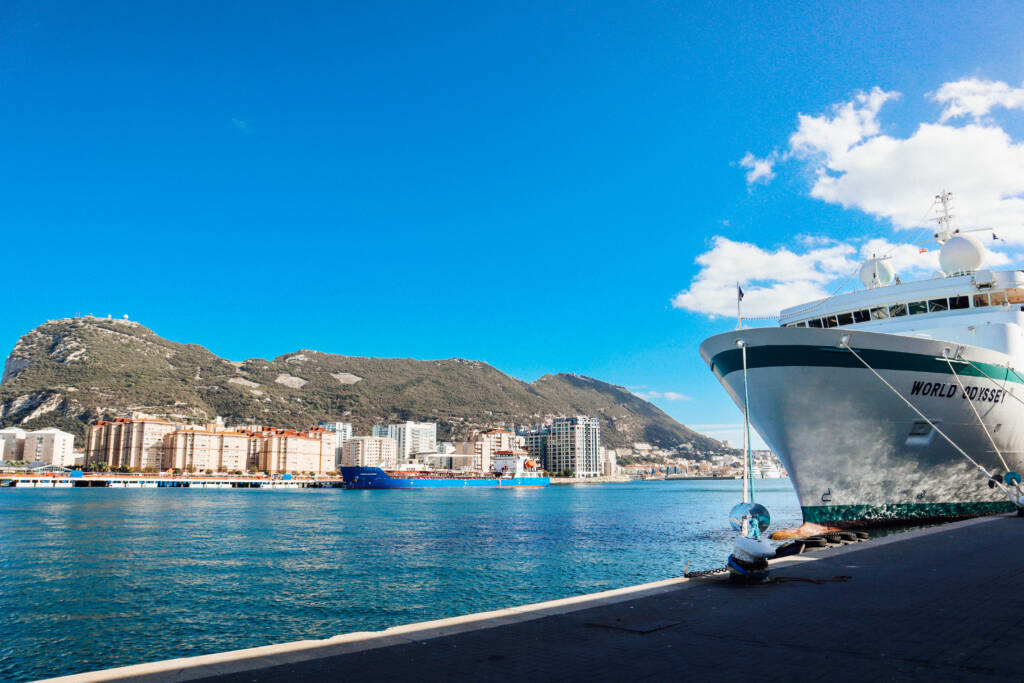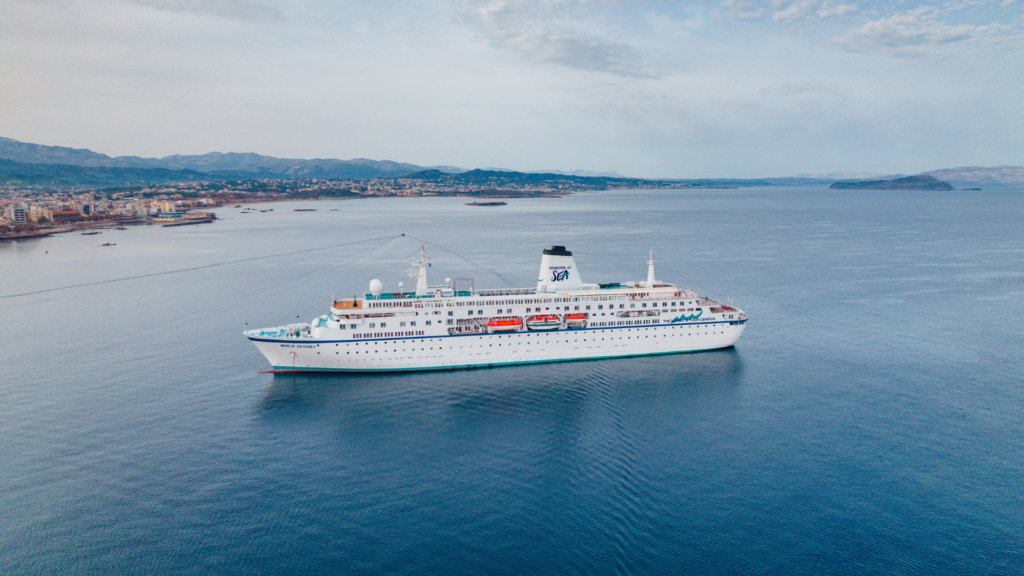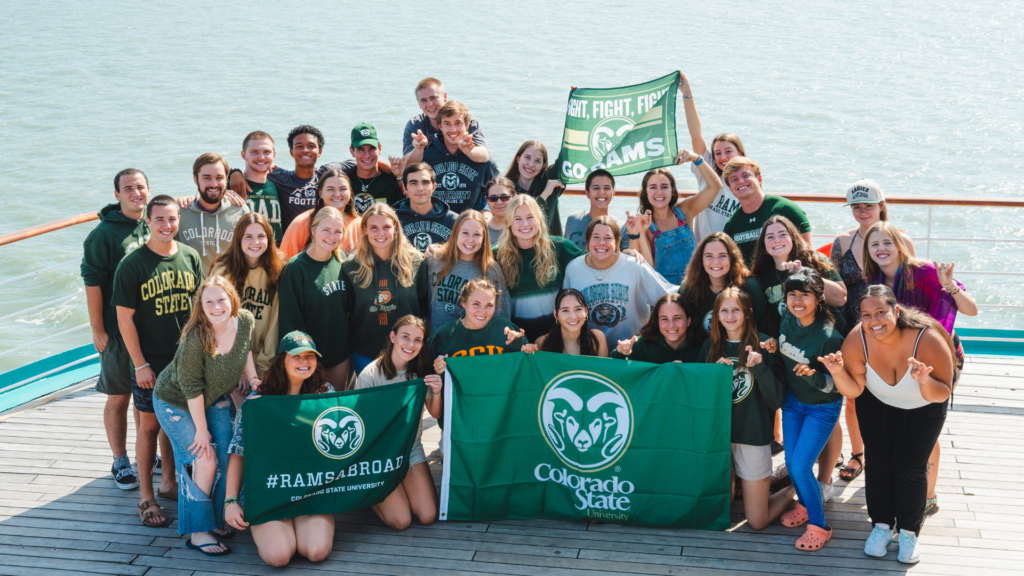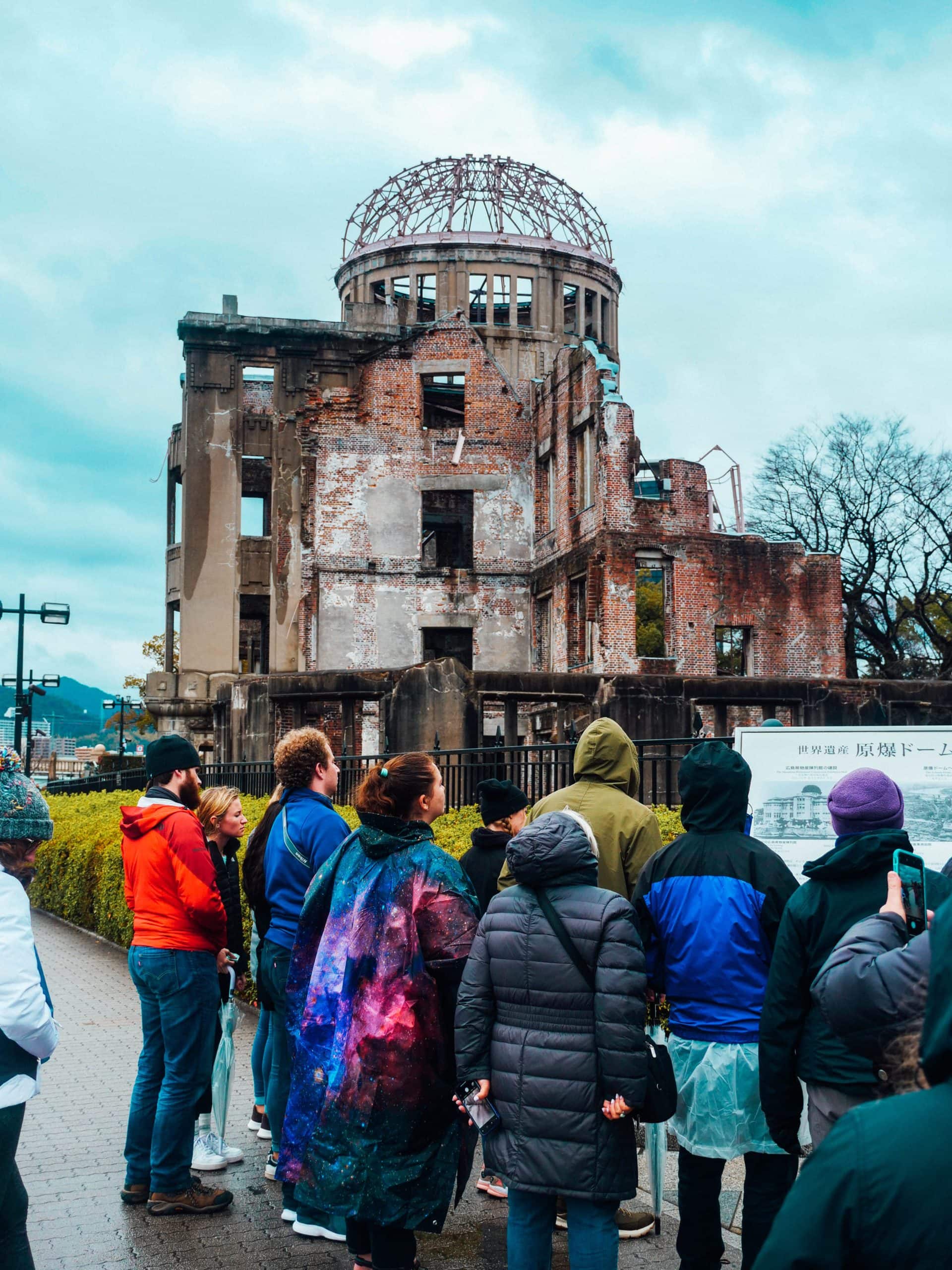
When reflecting on her time in Japan, Dean of Students Mari Strombom recalled that, “the most memorable experience for me was visiting Hiroshima. The only way that I can describe it is that it made my heart hurt.”
As part of a Semester at Sea Field Program, a group of voyagers spent the first of two days exploring Himeji, with visits to the castle and gardens. The next morning, the group took a ferry to Miyajima Island to explore sights and enjoy some free time. The final, most poignant stop on the itinerary was a trip to Hiroshima Peace Park.
The notable Genbaku Dome (also known as the A-Bomb Dome) was the first spot visited within the park. What used to be the former Prefectural Industrial Promotional Hall, the A-Bomb Dome was one of the few buildings to remain standing after the atomic bomb hit the city of Hiroshima on August 6, 1945. The site has been preserved as a startling reminder of the bomb, and is now a UNESCO World Heritage Site.
Voyagers then moved to the Children’s Peace Monument, where they learned the story of Sadako Sasaki and paper cranes. Sadako was exposed to the A-bomb when she was two years old. Though she didn’t sustain any apparent injuries in the midst of the bombing, she developed signs of leukemia nine years later.
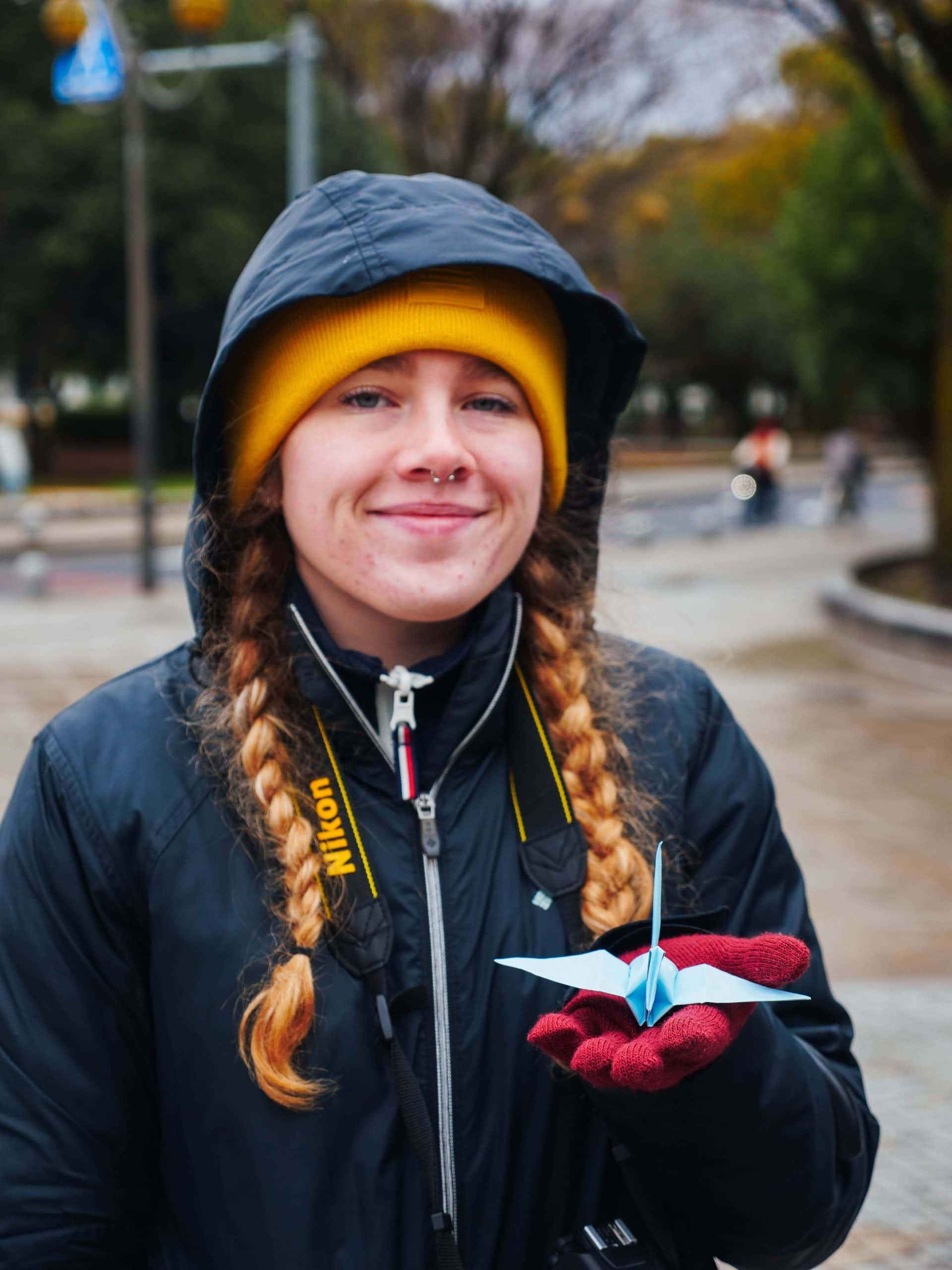
Her death triggered a national campaign to create a monument and peace memorial to respect and honor the many innocent children killed and affected by the atomic bomb. The current monument is recognized for its colorful paper cranes that are on display; nearly 10 million cranes are offered each year at the monument in honor of Sadako and other victims. Now, the monument also contains contributions from Spring 2020 voyagers.
Voyagers ended their day at the Hiroshima Peace Memorial Museum, where the group had about two hours to explore the museum at their own pace. Lifelong Learner Michael Borke summarized the museum by saying, “There are no words to describe being in that museum. There just aren’t words to express how important and how amazing that place is.”
Interactive rooms featured pictures and records of the devastating impact of the bomb, both on the day bomb was dropped and years in to the future. Perhaps most devastating were the hundreds of personal stories that were on display. There were piles of ripped and burned clothing, faded letters to family, old diaries, and detailed biographies of children and adults who did not survive. Reading their stories was an unsettling look at the tragic reality of the bomb, but also a reminder of the humanity of humankind. Despite immense fear and chaos, many people’s last words were about love: “Tell my family I love them.”
Despite what the city of Hiroshima and its people have gone through, there was no agenda of hate or blame in the museum. Voyagers found this was especially powerful. “You don’t usually think about the other side of what we hear in the history books,” said Spring 2020 Voyager Max Johnson. “But seeing that firsthand was very interesting and I think something that’s very important.”
For others, visiting the museum made them think of their own family history. Student Gabe Goldstein recalled, “My great grandfather worked on the Manhattan Project during World War II and helped build the bomb. Fast forward to me; I got to see the damage from the bomb today in Hiroshima, so it was really powerful and a full circle moment for me. I could see the unfortunate damage that was caused.” Though students left the museum feeling heavy, visiting the museum was an important time of reflection , an impactful stop for Spring 2020 Voyagers, who were at times overwhelmed by the city’s call for peace and harmony.
